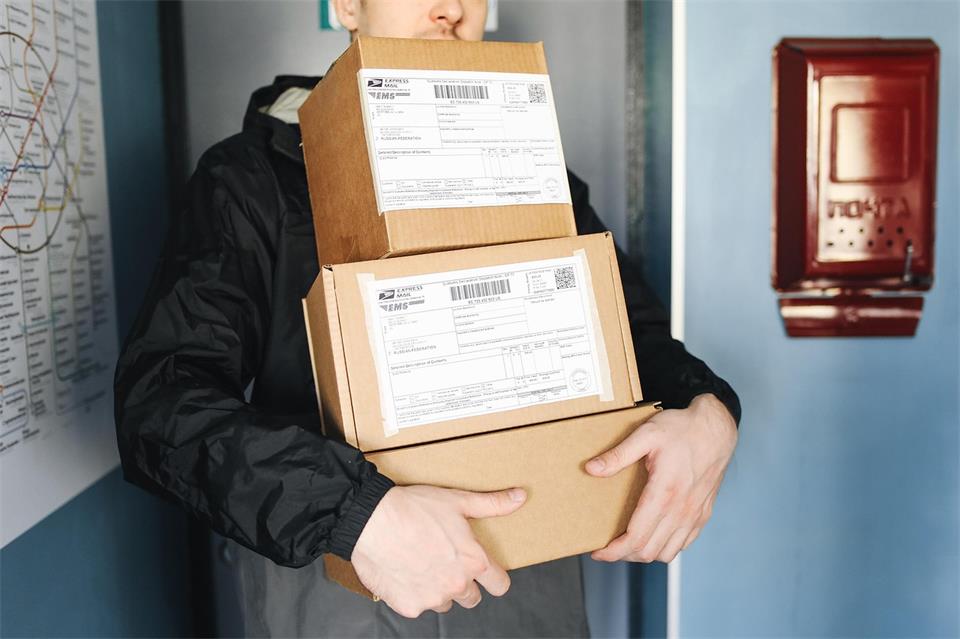What people expect from deliveries today isn’t the same as it was five years ago. Or even last year. Shoppers want fast, flexible, trackable, and reliable deliveries—and they’re not shy about switching providers if that doesn’t happen.
The last mile has gone from a back-end operation to a customer-facing priority. If your last mile isn’t keeping up, it’s not just a logistics problem; it’s a business problem.
So, let’s look at what’s changed, what people now expect, and how your last mile needs to step up.
The last mile is no longer the end—it’s the experience
This is where the real customer experience kicks in.
Think about it. The buying process might start on a website or app, but the moment of truth is when the customer gets that knock at the door or notification that their parcel’s been delivered.
A late, missed, or unclear delivery turns a smooth transaction into a frustrating one.
On the flip side, a smooth delivery with great communication leaves a strong, lasting impression. That’s where modern last mile delivery software becomes essential. It helps manage the whole process, from driver dispatch to real-time tracking, all while keeping customers in the loop.
But more on that in a sec. First, what do today’s customers actually expect?
What customers want (and expect by default)
Delivery expectations are no longer just “fast” or “cheap.” Customers now look for:
- Accuracy – If you say it’ll arrive Thursday, it better arrive Thursday. Not Friday. Not “sometime next week.”
- Visibility – People want to track where their order is, live. Not just a vague “out for delivery” email.
- Convenience – Flexibility around delivery time and location is no longer a luxury. It’s the norm.
- Communication – Clear, timely updates—especially if something changes.
- Sustainability – Many now care how a delivery is made, not just when. Eco-conscious delivery options are rising fast.
These expectations aren’t coming out of nowhere. Big players have shifted the benchmark. Now, customers hold every business to the same standard, whether it’s a local store or a national retailer.
Why delivery is now a dealbreaker
Let’s be real; most customers don’t think about your logistics setup, but they absolutely judge the result of it.
A bad delivery can ruin the entire purchase experience, even if everything else was perfect. And for first-time buyers? You rarely get a second chance.
If your last mile is clunky, inconsistent, or slow, it’s not just about operational efficiency anymore, it’s about losing customers.
That’s why improving the last mile isn’t a “nice to have” update. It’s core to staying competitive.
Where last mile delivery software fits in
At a certain point, spreadsheets and manual processes just don’t cut it. Modern last mile delivery software is designed to handle the complexity that comes with customer-first delivery expectations. Think smart route optimisation, real-time tracking, automated driver updates, proof of delivery, and customer notifications—all in one place.
It also helps reduce mistakes, delays, and missed deliveries. That’s a win for your team and your customers. Just make sure the system you choose actually supports the things that matter to your operation. Don’t fall for flashy extras you’ll never use.
Your drivers are part of your brand
This part often gets overlooked. The person who drops off your parcel? That’s who the customer sees. In their eyes, that driver is your business in that moment. So, how they act, what they say, whether they show up on time—it all matters.
Make sure your drivers are supported with the right tools. That means:
- Easy-to-use driver apps
- Real-time access to schedules and updates
- Clear delivery instructions
- Simple ways to report issues
When drivers are set up properly, they can deliver a better experience.
How to know if your last mile isn’t working
Sometimes it’s obvious. Packages arrive late, customers complain, and your support team is constantly putting out fires. Other times, the problems are more subtle. A few signs to watch:
- Drivers are constantly rerouting or running behind
- Customer service is fielding “where’s my order?” calls daily
- Failed deliveries are creeping up
- You’re spending more on last mile than planned
- No one has a clear view of what’s happening out on the road
These are red flags that your current setup isn’t keeping up.
It’s not just about speed
There’s a common myth that fast delivery solves everything. And yes, speed is important. But customers will take slightly slower delivery if it’s reliable, predictable, and well-communicated.
That’s good news for businesses that can’t offer same-day delivery but still want to stay competitive.
Focus on getting the fundamentals right—accuracy, communication, and consistency. The “wow” factor comes from doing those things really well.
Small fixes that make a big difference
You don’t always need a full-scale logistics overhaul. Sometimes, a few targeted updates can go a long way.
- Start by mapping your current last mile journey. What happens from the moment a parcel is packed to when it’s delivered?
- Identify weak spots. Is it poor communication? Manual driver scheduling? No live tracking?
- Prioritise fixes that improve the customer experience directly. Even small tweaks—like more accurate ETAs—can change how people feel about your brand.
And if you’re using outdated systems (or no system at all), it might be time to look into software that brings it all together.
Wrapping it all together
Delivery is no longer just a logistics function; it’s a customer experience touchpoint. And with expectations only going up, the last mile needs to be fast, flexible, visible, and easy to manage.
If your current setup is holding you back, the time to update it isn’t “someday”—it’s now.
Invest in systems that make things easier for your team and better for your customers. Rethink how you support your drivers. And always keep an eye on how the last mile feels from the customer’s point of view.






